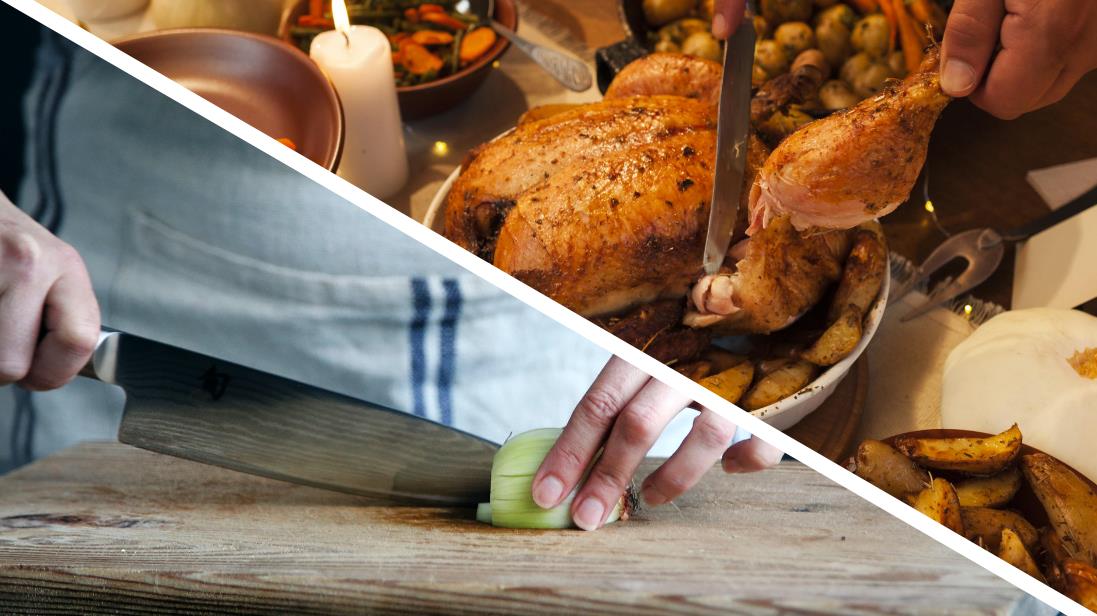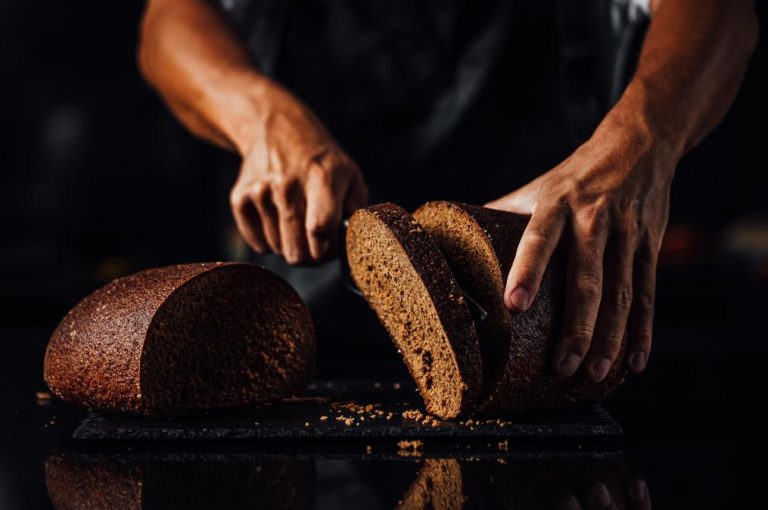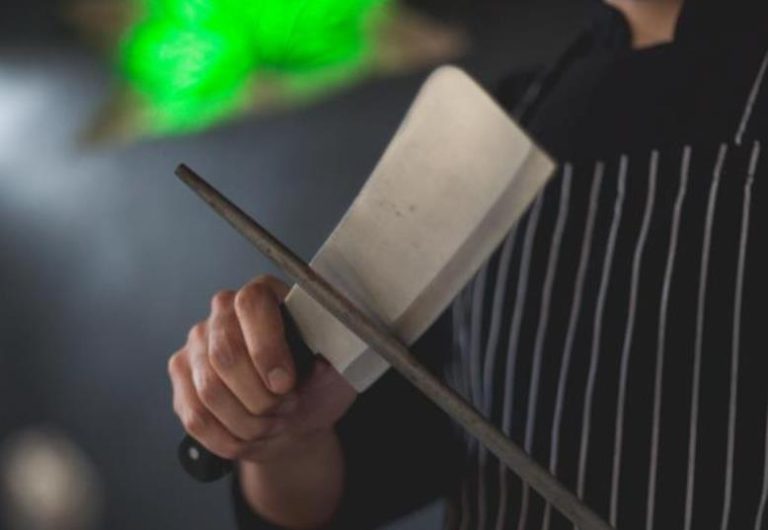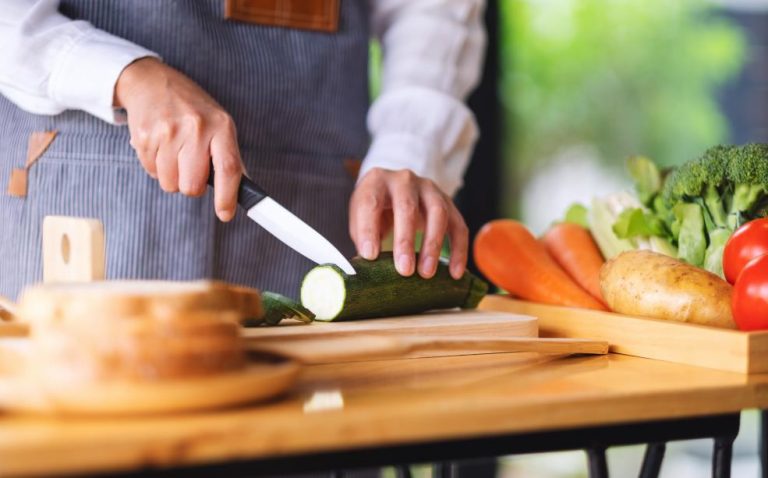The chef’s knife is the primary kitchen knife employed for almost all tasks. It’s the only tool that takes care of the cook’s general cutting needs. Anyone can use a chef’s knife to slice, chop, mince, and take advantage of the sharp tip for detailed trimming.
The carving knife is a kitchen knife with a specific purpose. Its main use case is to carve roasts and poultry. The carving knife is the blade cooks pick up for Thanksgiving and large gatherings to carve feasts.
While the carving knife has specific uses, it’s an adaptable kitchen knife that can do more than just butchering poultry. Sure, it isn’t as versatile as the chef’s knife, but cooks can get more services from a carving knife than they might expect.
This article will compare the chef’s knife with the carving knife, covering their differences in design, uses, and more.
What is a chef’s knife?
The chef’s knife is an all-purpose kitchen knife cooks can employ for various cutting needs. It’s one of the few kitchen knives western cooks use for almost everything.
Design
The western chef’s knife has a straightforward blade design. All chef’s knives have a stabby tip with a broad heel. This design creates a curved cutting edge, enabling the cook to rock chop. With this cutting style, the end of the blade remains on the board while the belly and heel do the cutting work.
The chef’s knives feature a blade length of 6 to 12 inches. The most common size for home cooks is 8 inches, while professional chefs usually opt for a longer blade.
These multi-purpose kitchen knives often feature a bolster. It’s the transitioning point between the handle and blade. The bolster can be full, covering the spine right after the handle and the heel. This dulls the heel’s back, making it safer to use for novice cooks.
There are also semi-bolsters. This bolster type only sticks out from the handle, not affecting the heel. The semi-bolster is complimentary for the pinch grip technique.
Uses
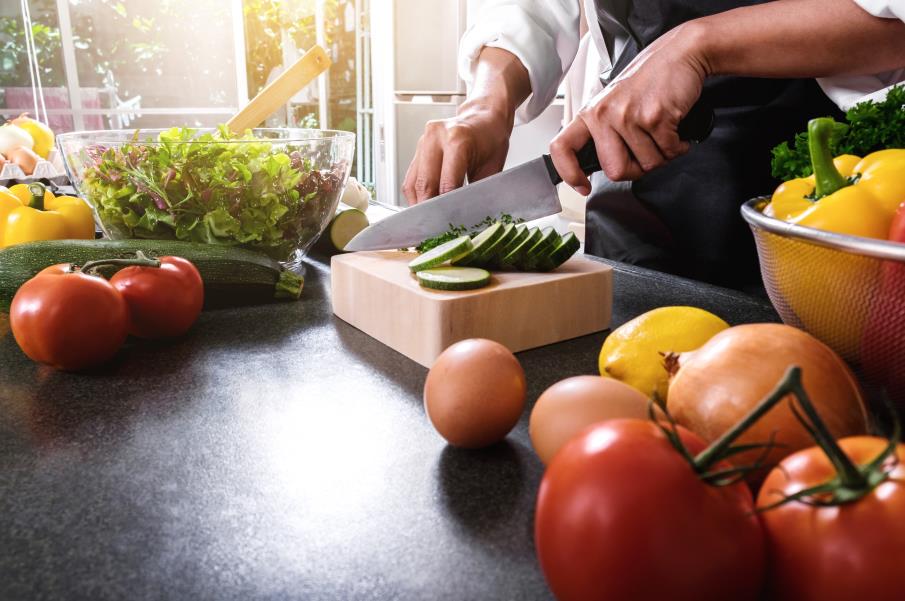
There isn’t a specific use of the western chef’s knife. Cooks can utilize it for pretty much everything rather than being a master at anything particular. What started as a kitchen knife to butcher meat and disjoint large cuts, the chef’s knife proves its worth as being the most versatile option.
Most western chefs are comfortable using the chef’s knife as if it was an extension of their arm. Cooks can use it to slice, chop, mince, julienne, disjoint, and many other tasks.
The chef’s knife is essentially many kitchen knives all in one. The ability to use just one blade for various cutting styles is the reason behind its name. It’s a kitchen knife that can output the same uses as most specialty knives – not at a perfect degree, but fair enough that it fulfills the demand.
Buy Wholesale Knives and Start Scaling up with Us Today
Contact us and connect with a sales rep to get a free quote.
What is a carving knife?
The carving knife is a specialty kitchen knife that often upholds other duties as well. Chefs use this kitchen knife mainly to carve roasts and poultry. It also makes a fair slicer. That’s why many cooks confuse it with the slicing knife.
Design
The carving knife has a narrow blade profile with a pointed tip. The end of carving knives is always extremely sharp, resembling a spike. This feature allows the cook to pierce dense ingredients and follow up with a slice to separate the cuts.
The carving knife’s length can be anywhere from 8 to 12 inches. A 10-inch carving knife is ideal for home cooks and longer blades for professionals – like chef’s knives.
The blade isn’t flexible but not as rigid as Japanese kitchen knives made from hard steel. It has a slight bend, but not as much as slicing or utility knives. This is because they don’t have a slender blade with an average thickness of 3.5 to 4.5mm.
Some design parts of chef’s knives are also visible in these kitchen knives. The carving knives feature a semi-bolster with a western-style handle.
Uses
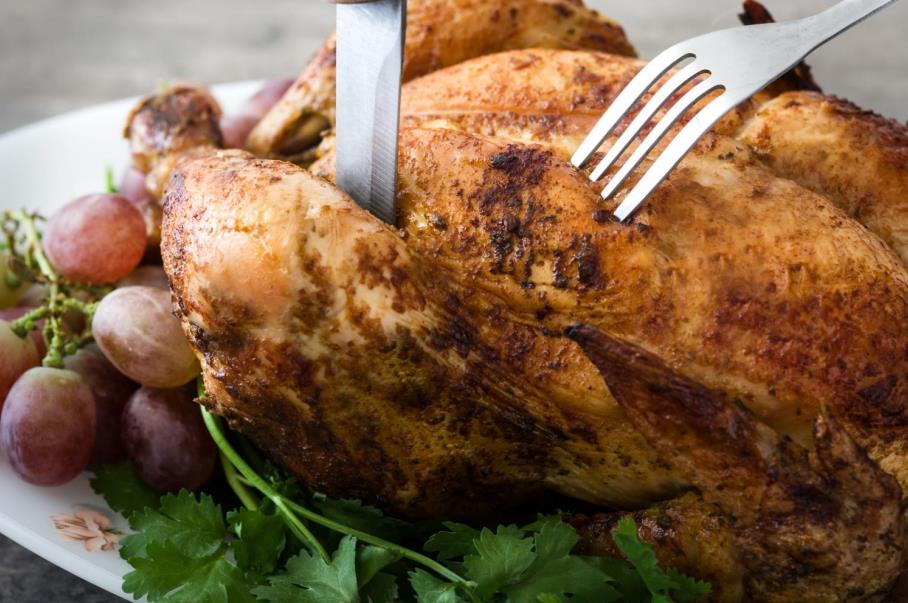
This kitchen knife has a specific purpose. So, it excels in one more than others. Using a carving knife isn’t the only way your customers can break down a turkey on Thanksgiving or carve roasts, but it’s the most practical.
The design elements mentioned above make the carving knife an excellent kitchen knife for these duties. It provides manageable control for even novice cooks, making it effortless to use.
The carving knife is a specialty knife with a particular purpose, but it’s very adaptable. Your customers can employ it for various cutting tasks, like a utility knife. When a utility knife’s blade length is insufficient, for squash and melons, for example, the carving knife works wonders.
Chef’s knife vs. carving knife
Now comes the part where we’ll compare the chef’s knife and carving knife. Read the rest carefully to find out which one makes a better product for your knife store and customers.
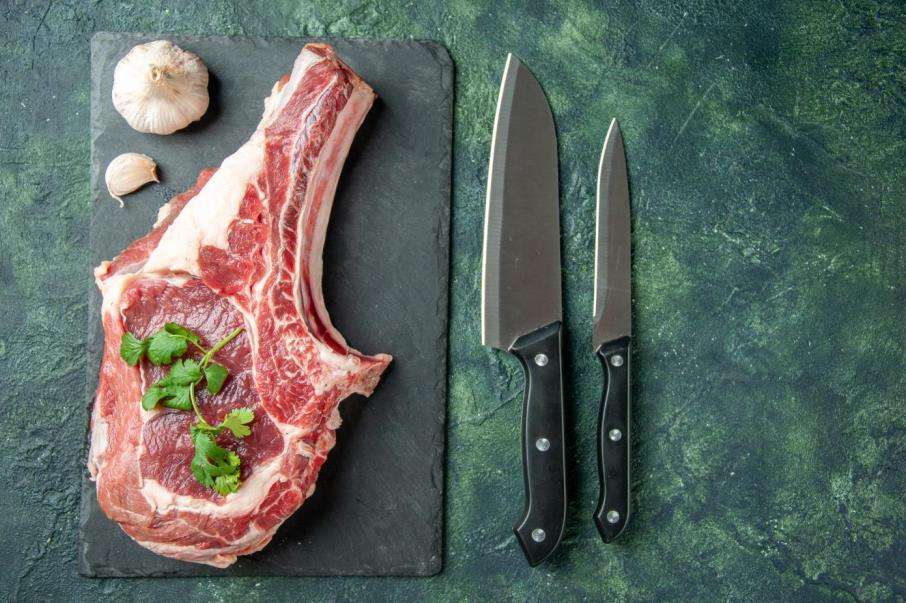
Knife Design
The chef’s knife doesn’t have a narrow blade, but it’s just as long. Some chef’s knives come with even lengthier blades, up to 14 inches.
One of the first differences your eyes will catch is the blade height. The chef’s knife stands much taller than a carving knife. Depending on your customers’ preferences, this can be both beneficial and disadvantageous. The blade height creates friction between the knife and food, leading to slices sticking.
The food sticking to the blade can result in tears and shreds. The carving knife’s narrow build is beneficial to cooks using a knife to cut moist foods that tend to do this.
That exactly sounds like roasts, Thanksgiving turkey, and baked poultry. The carving knife is the perfect tool for breaking these down. After all, it’s the kitchen knife designed for this purpose.
While the narrow blade has pros, such as a lighter silhouette and better food separation, they come with a few downsides. These blades aren’t as durable as a chef’s knife’s broad blade. They also only cut, whereas the chef’s knife can go beyond just slicing and chopping.
Professional chefs often use the wide blade of the chef’s knife to scoop foods from the cutting board, crush nuts and garlic, and apply pressure on the spine to cut dense ingredients. These are challenging for carving knives simply due to the blade design.
Uses
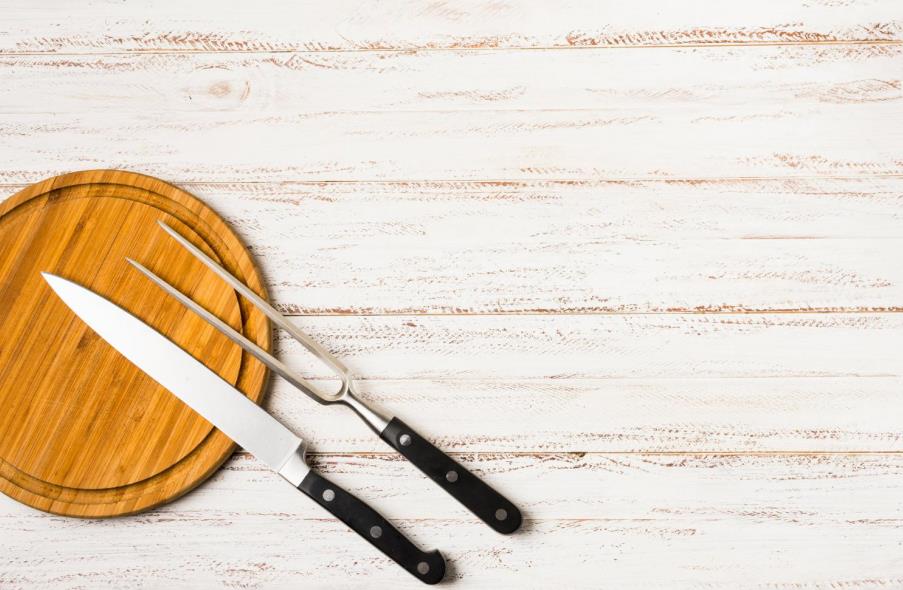
The carving knife has a specific use in the kitchen, hence its name. Carving roasts and poultry is its primary focus. The carving knife is the most helpful tool for portioning a whole turkey or roast.
On the other hand, the chef’s knife is the most adaptable kitchen knife – without a doubt. The carving knife is not a match for the versatility of a chef’s knife. It can slice, break small bones, disjoint, and likely carve the same dishes as a carving knife.
The carving knife is also fit for more than just its intended purpose. It makes an appropriate slicer. In fact, chefs carve roasts and whole poultry and continue slicing with it – no need for another blade.
Nonetheless, the chef’s knife has more uses than a carving knife. Although it won’t carve foods as well and practically as a carving knife, the chef’s knife is still a good substitute.
The bottom line is the carving knife is best for its specific use and the chef’s knife for everything else.
Cutting style
How your customers operate a chef’s knife isn’t the same as a carving knife. Most cooks hold the chef’s knife by pinching the spine with the handle. They can then rock chop following this grip technique. This way of gripping a knife is impossible with a carving knife as the blade is limited.
Chefs commonly hold the carving knife by gripping the handle and applying pressure on the spine using their index fingers. Since roasts are fragile, a carving knife is the best assistant for these kitchen knives.
Slicing or separating the meat from the bones becomes a straightforward process with the help of a carving fork to stabilize the food. You can make bundles with forks if you plan on selling carving knives. This can boost further sales in your knife store.
Similarities between the two
Looking at these two kitchen knives is enough to spot where they are different. Still, they have their fair share of similarities. Some of these likenesses are minor; some are crucial for the users. It’s vital for any knife store to know these to offer the best product to their customers.
The carving and chef’s knives are both western-style kitchen knives with the same or similar blade parts. Both can feature a bolster, thick spines, equivalent knife steel, pointed tip, and handle.
Comparison table
| Carving knife | Chef’s knife | |
| Blade length | 8 to 12 inches | 6 to 12 inches with few having lengthier blade |
| Blade design | Narrow with a pointed tip | Tall at the heel that tapers down to a pointed tip |
| Steel | Western steel but usually with a higher hardness | Tough western knife steel |
| Spine thickness | 1.5 to 2.5mm | 2.5 to 4mm |
| Cutting technique | Single stroke and sawing motion | Rock chop and sawing motion |
| Main uses | Carving and slicing | Pretty much everything |
Buy Wholesale Knives and Start Scaling up with Us Today
Contact us and connect with a sales rep to get a free quote.
Should you sell a chef’s knife, carving knife, or both?
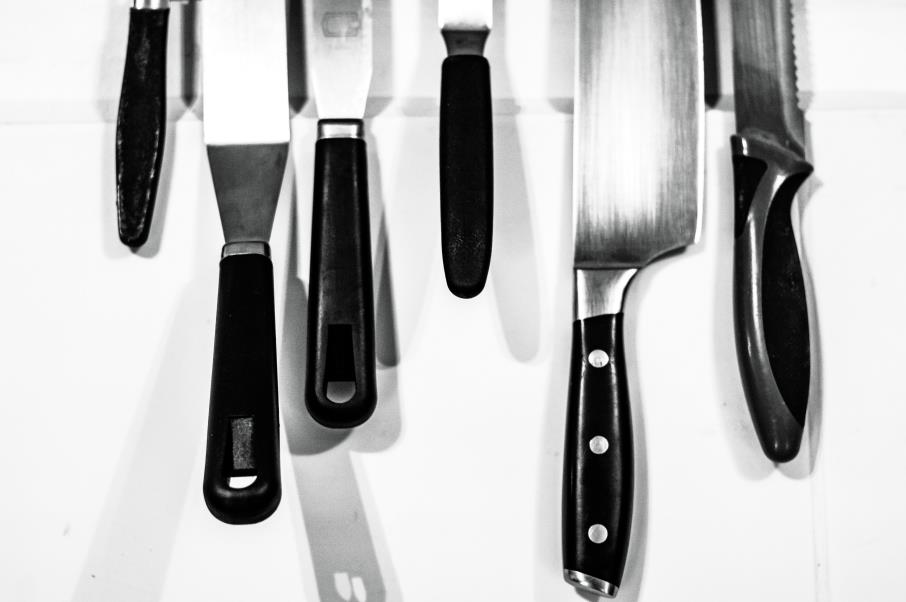
Carving knives aside for a moment, selling chef’s knives is a must for every knife store. It’s the only kitchen knife that will prove its usefulness for various cutting needs.
The chef’s knives you highlight in your knife store can be the typical western variation, Japanese alternatives, or just as versatile options, like the Santoku.
The carving knife isn’t a match for the all-rounder nature of these kitchen knives.
However, having a selection of carving knives is also essential, especially if your target customers are Americans and Europeans. From Thanksgiving turkey to weekend barbecues, the carving knife is a helpful blade they will pick up often.
Closing thoughts
The carving knife has a specific duty. It’s the knife for carving meats and poultry. The chef’s knife is an all-purpose kitchen knife that can also handle these – maybe not as good as a carving knife, but still.
Many knife brands that found huge success sell both of these kitchen knives. Wüsthof, Zwilling, Tefal, J.A. Henckels, to name a few. If you like the products of these brands, note that you can recreate an equal one with us that perfectly suits your customers. Get more information on our OEM service from here.
We have a broad category of carving and chef’s knives. Use the following links to check the products from our wholeale catalogs.
